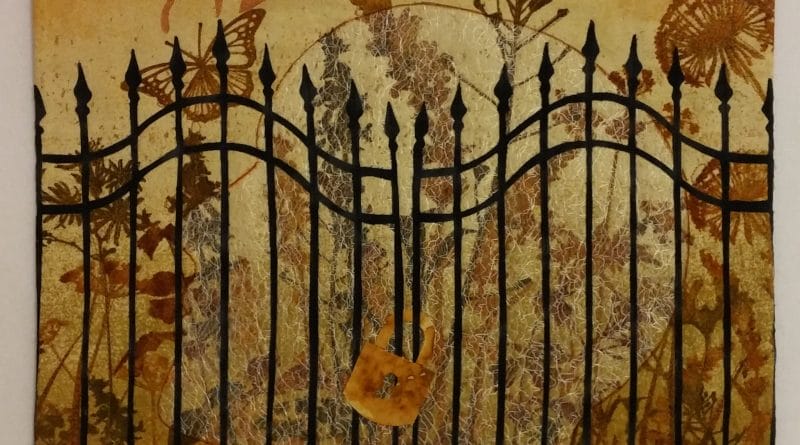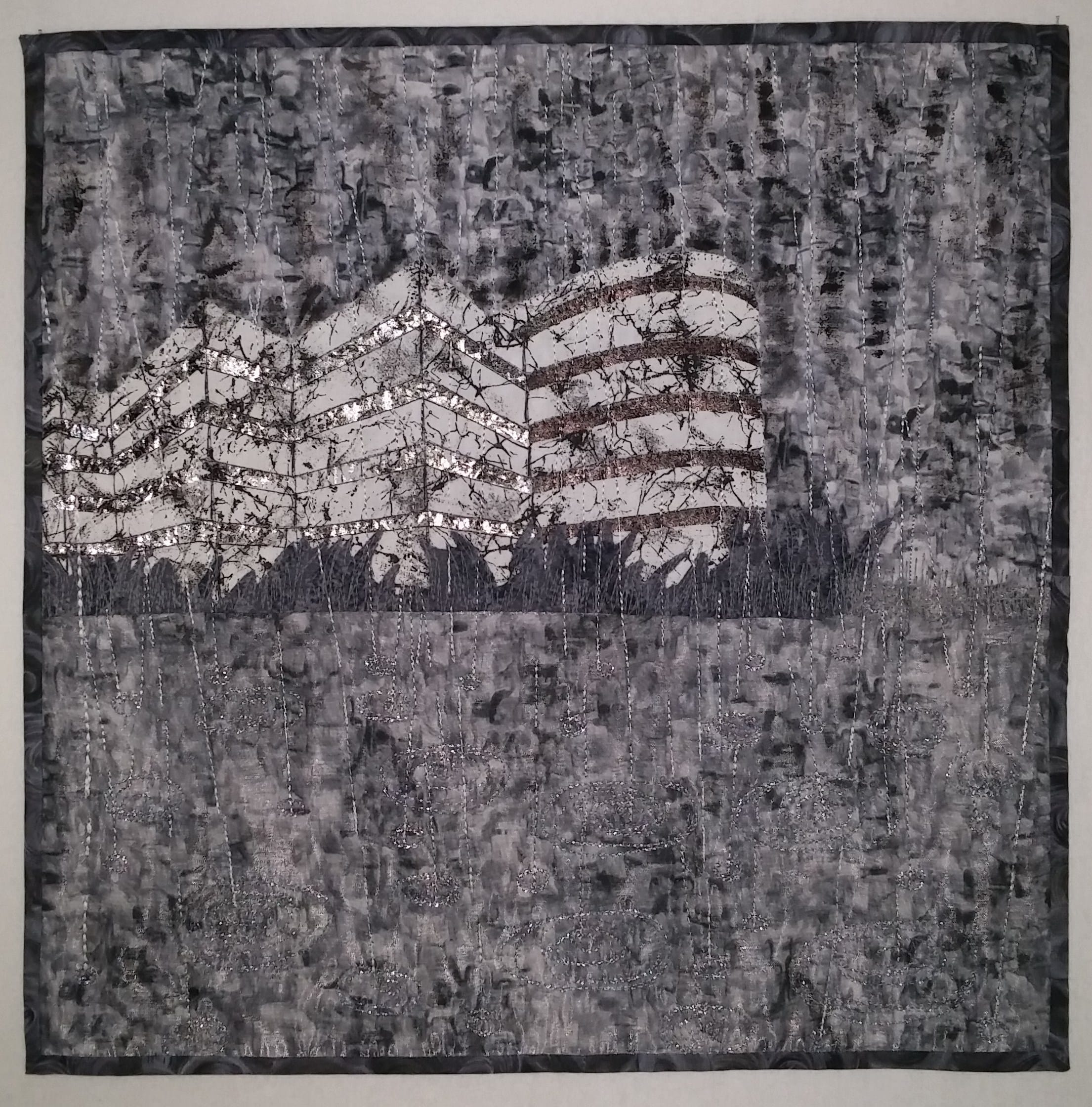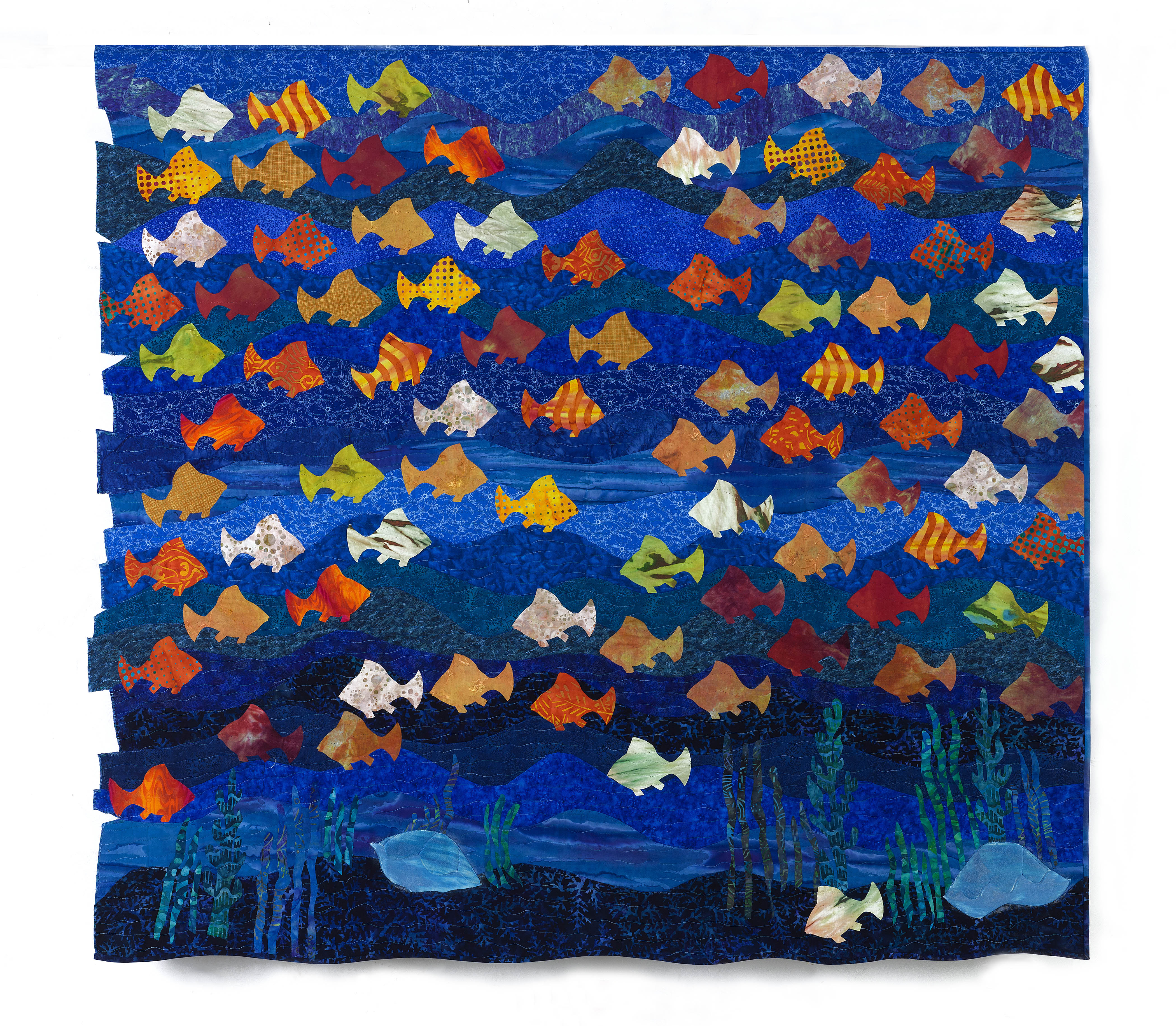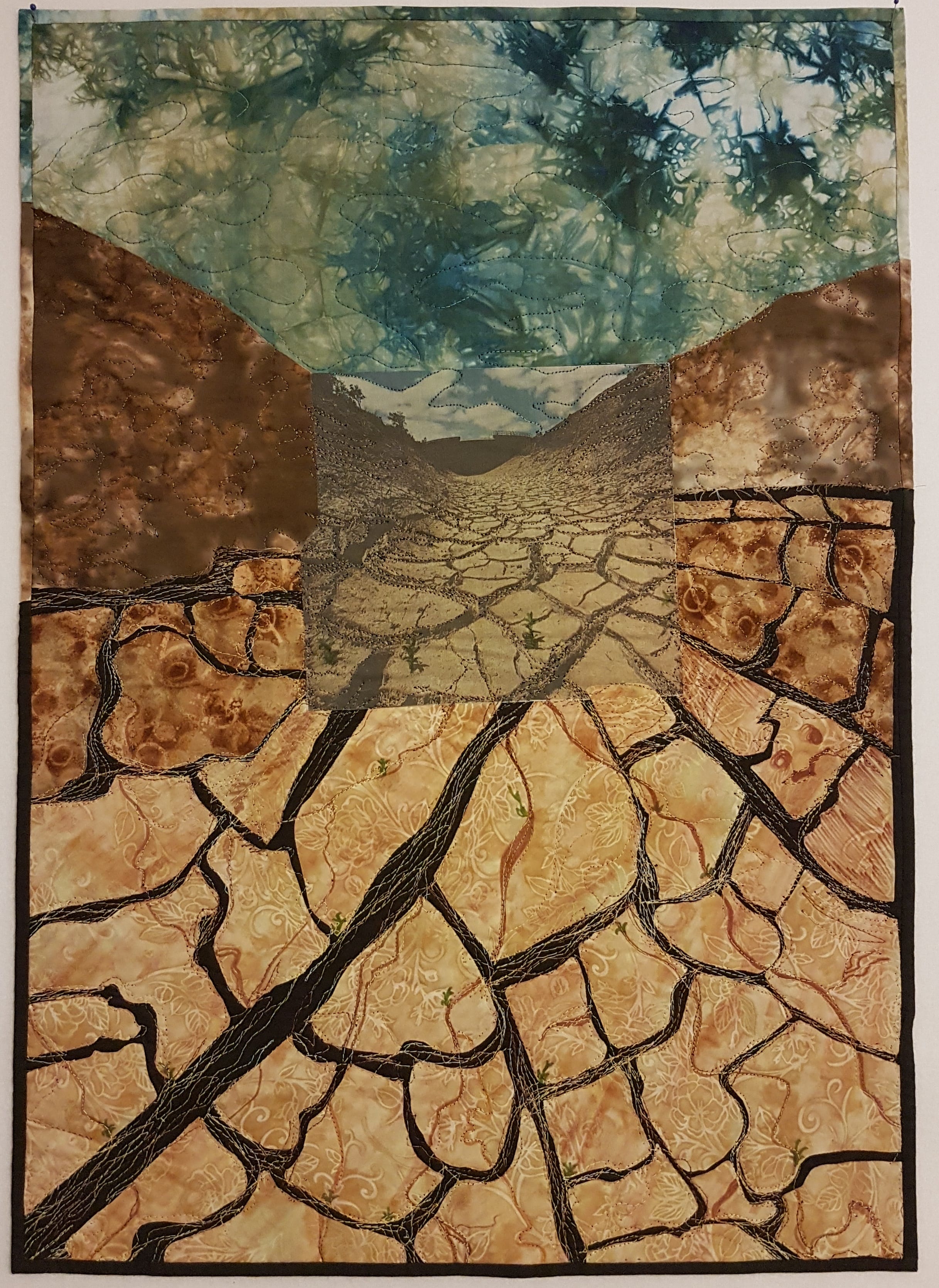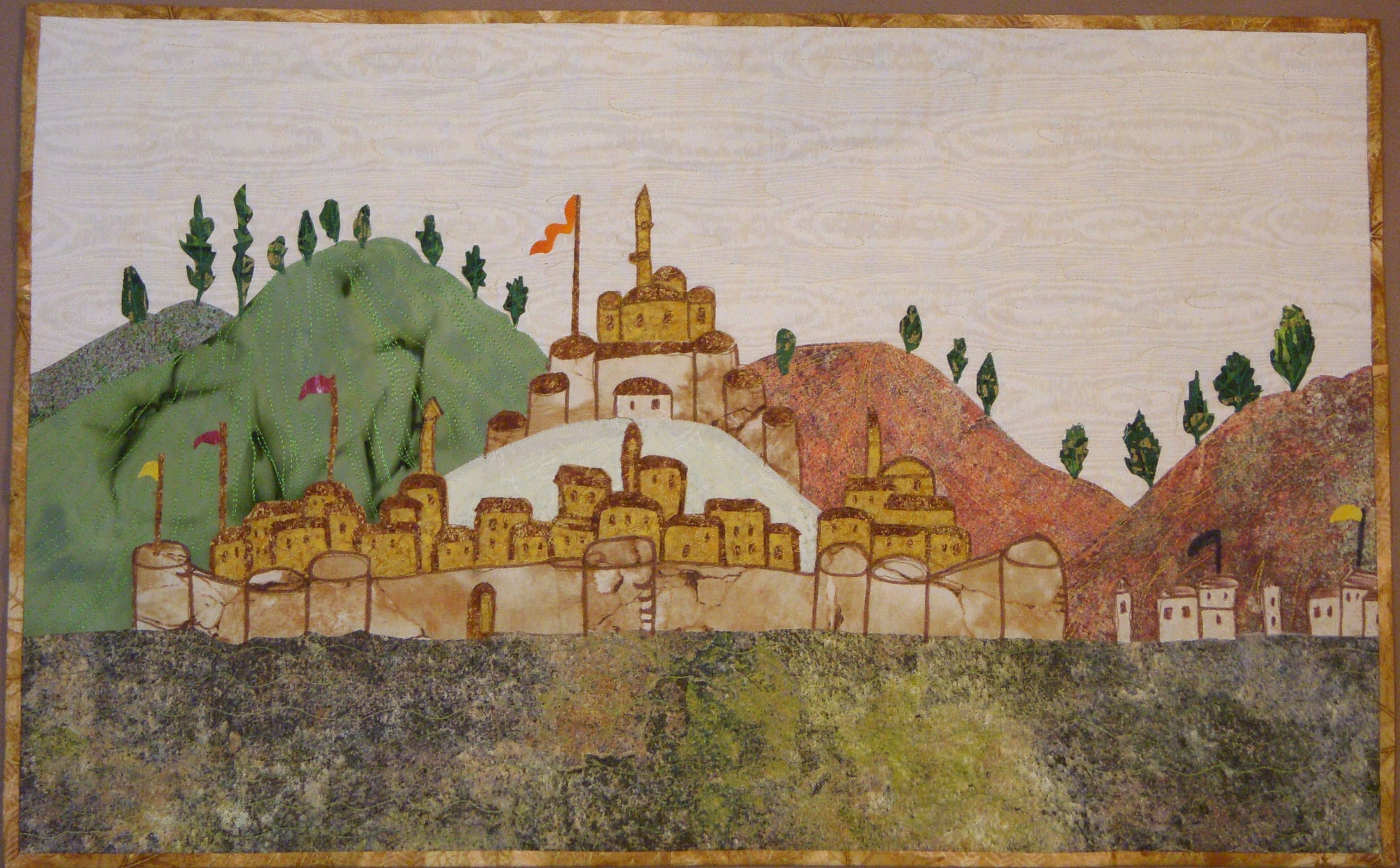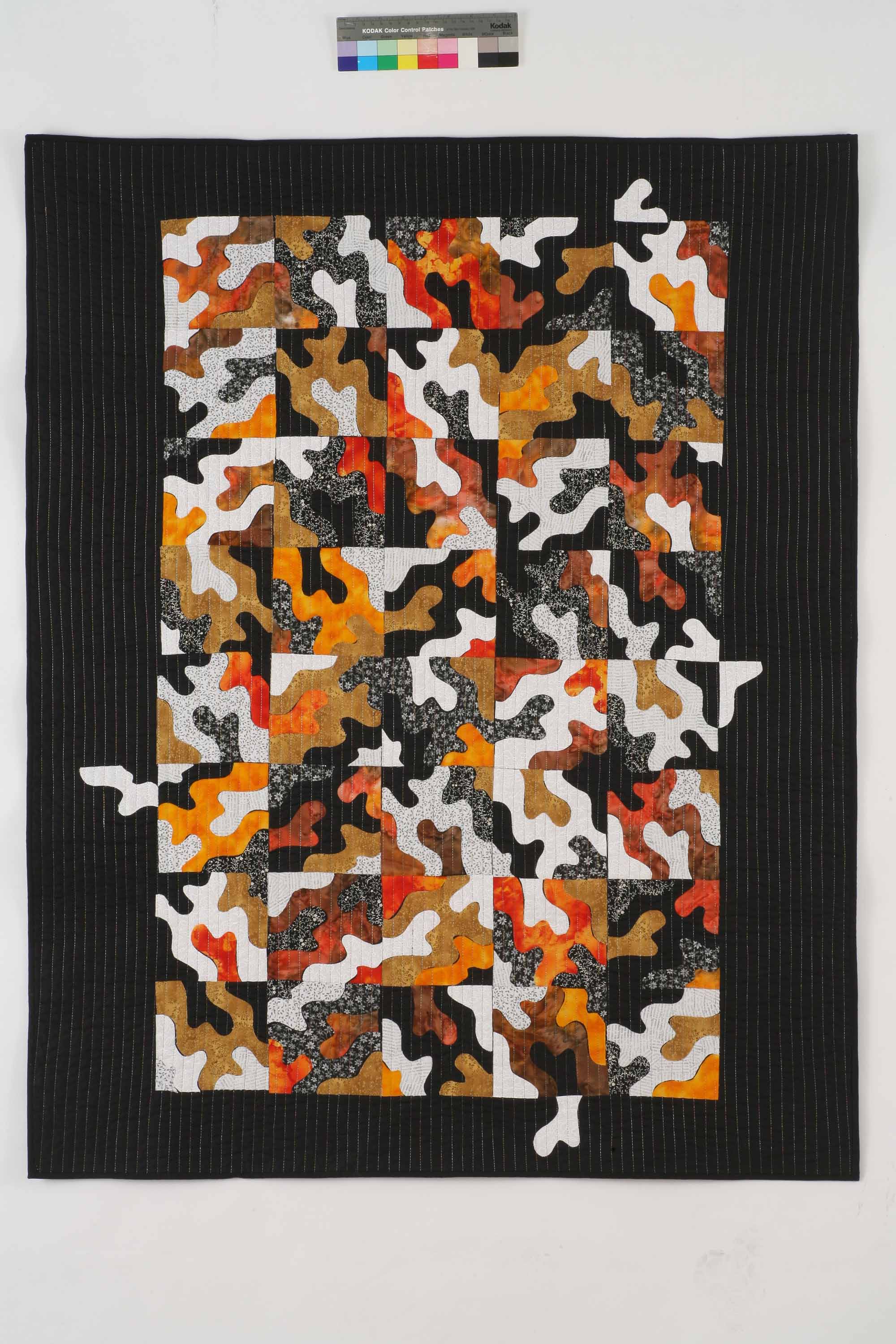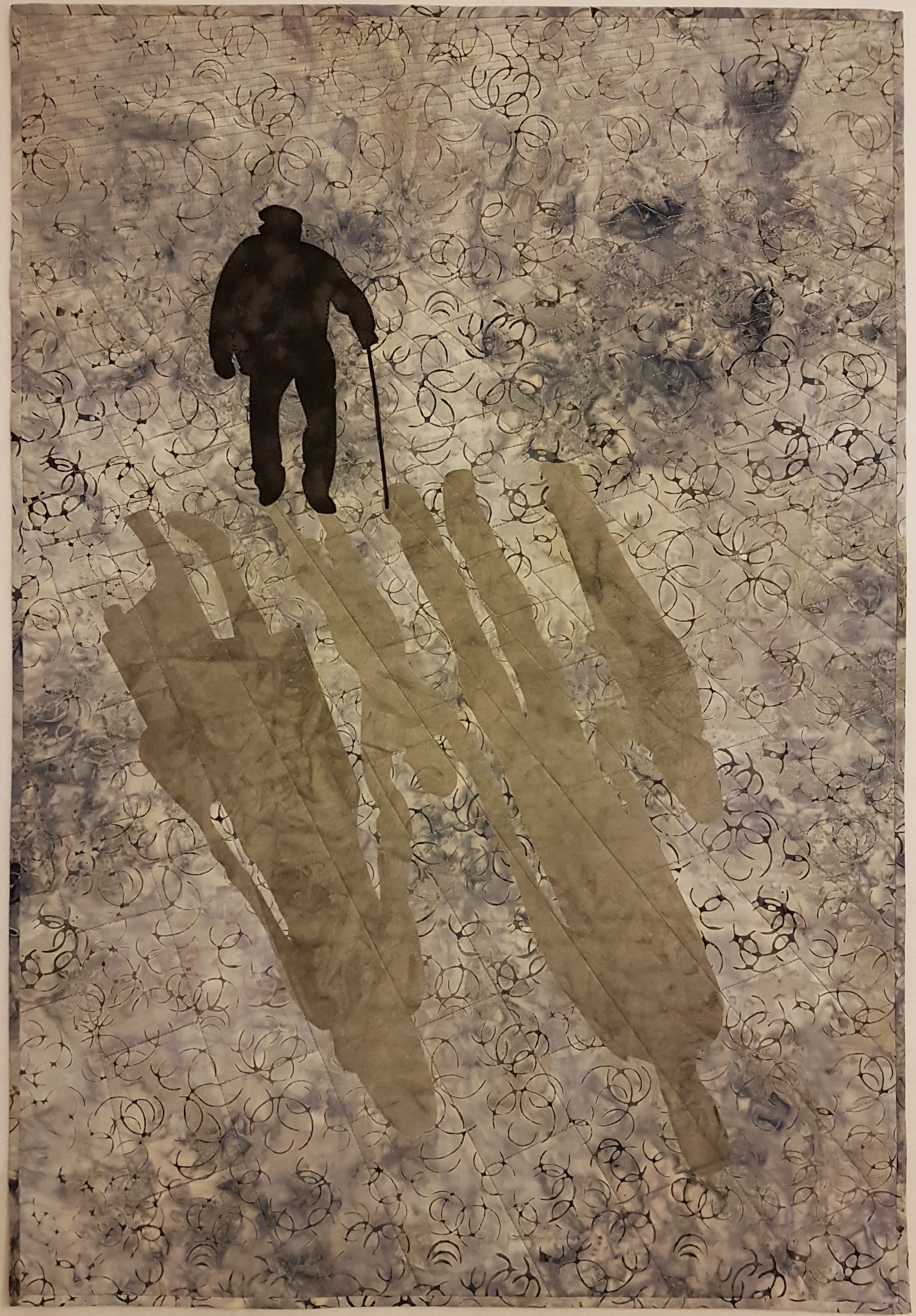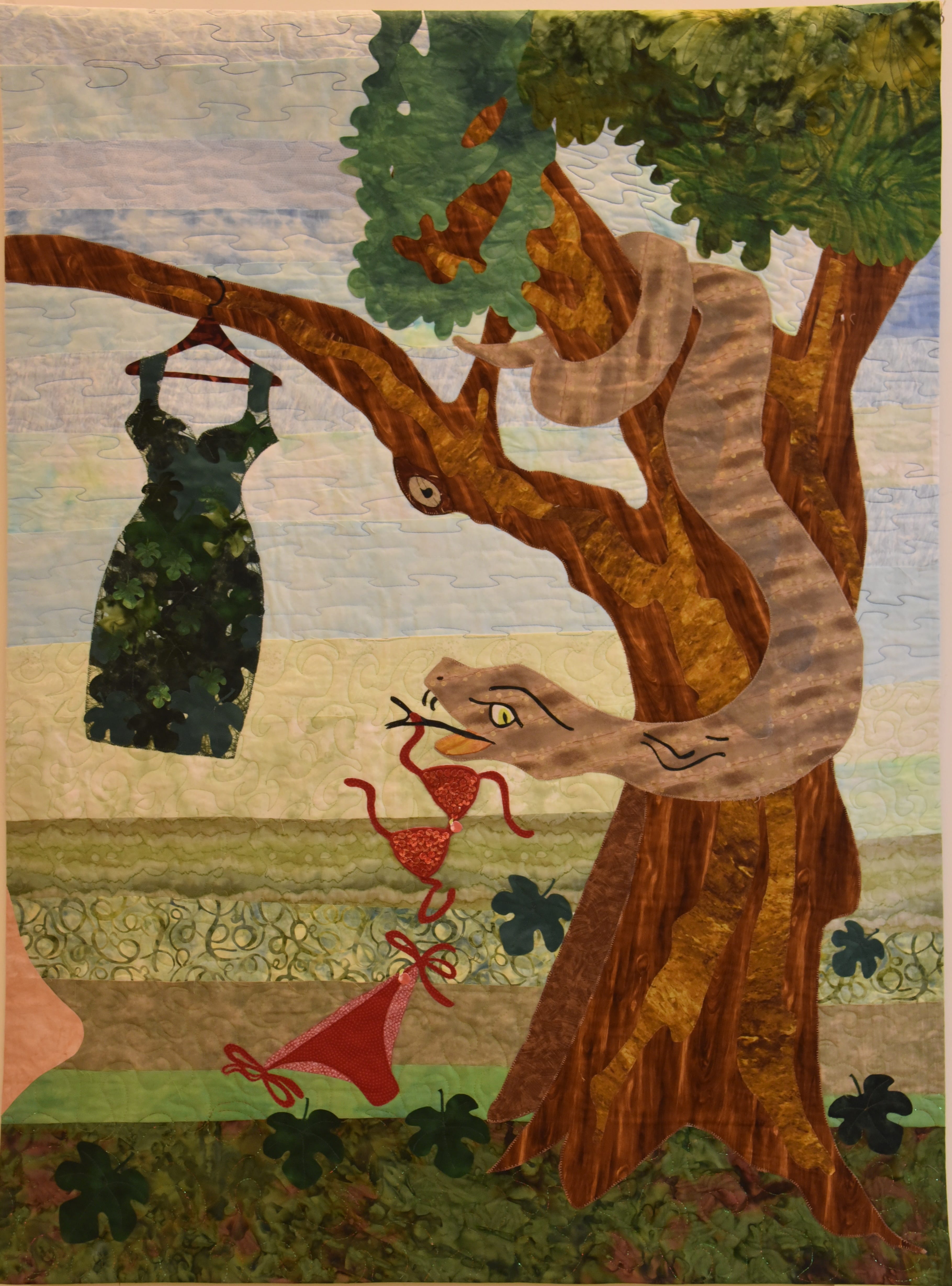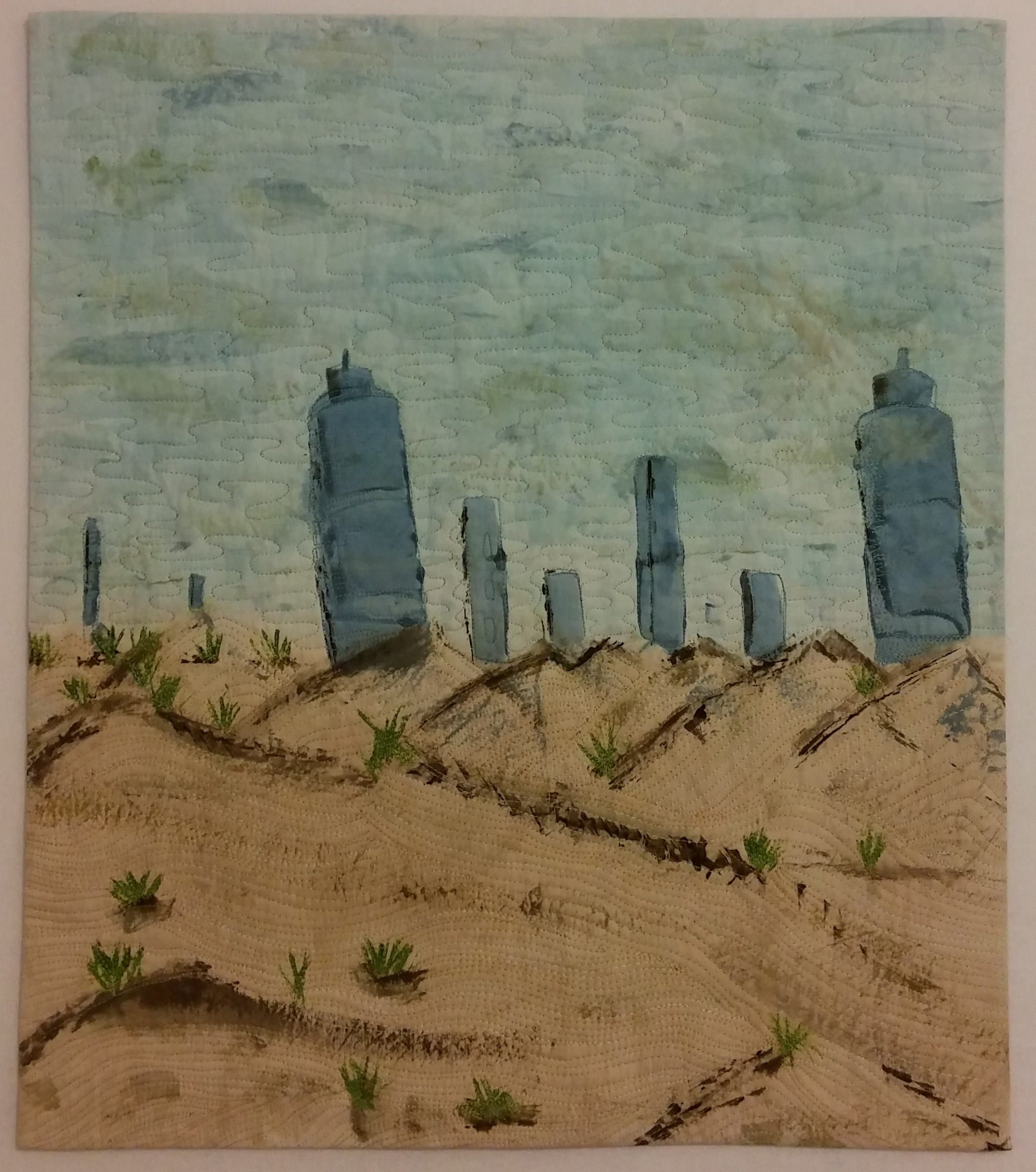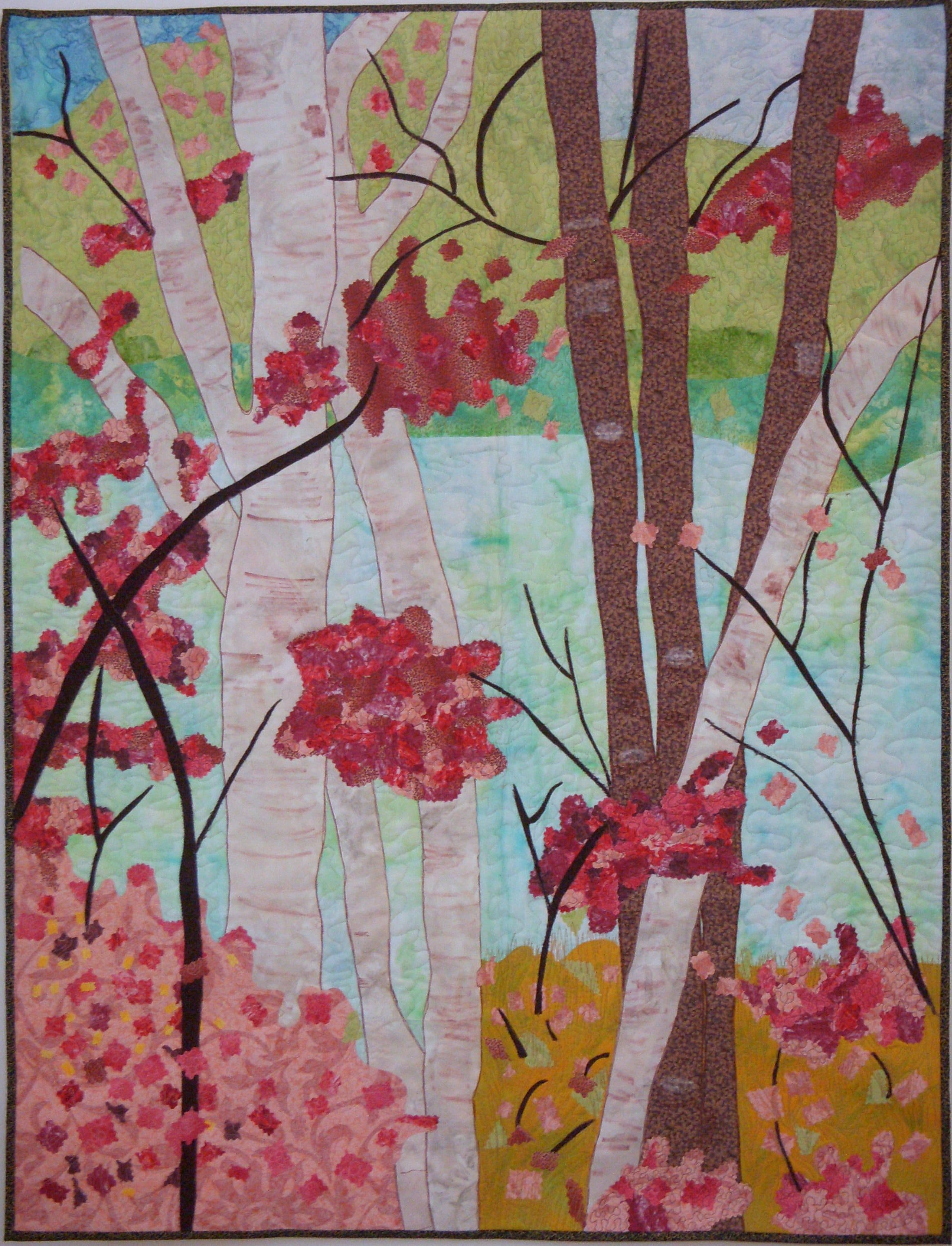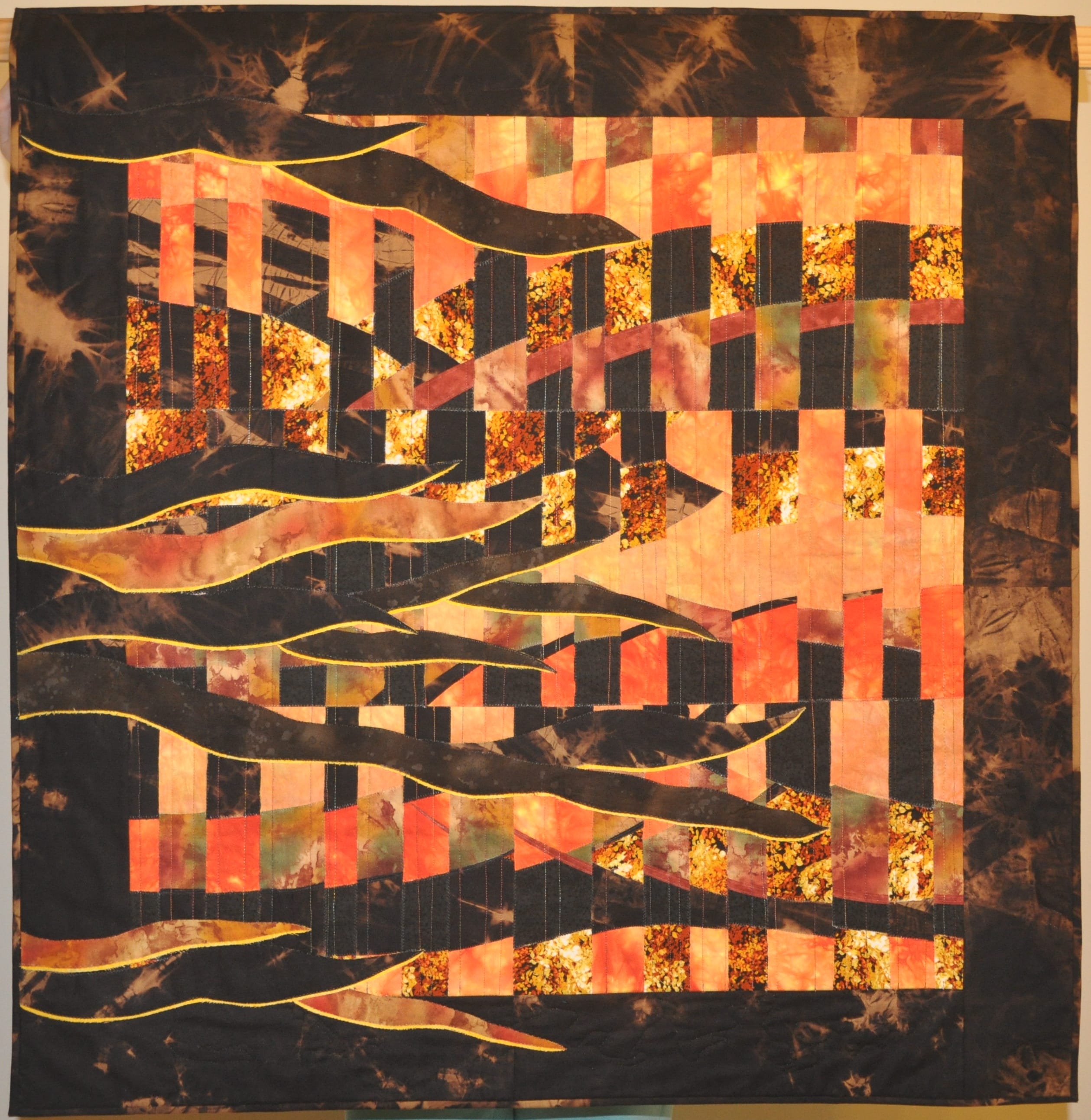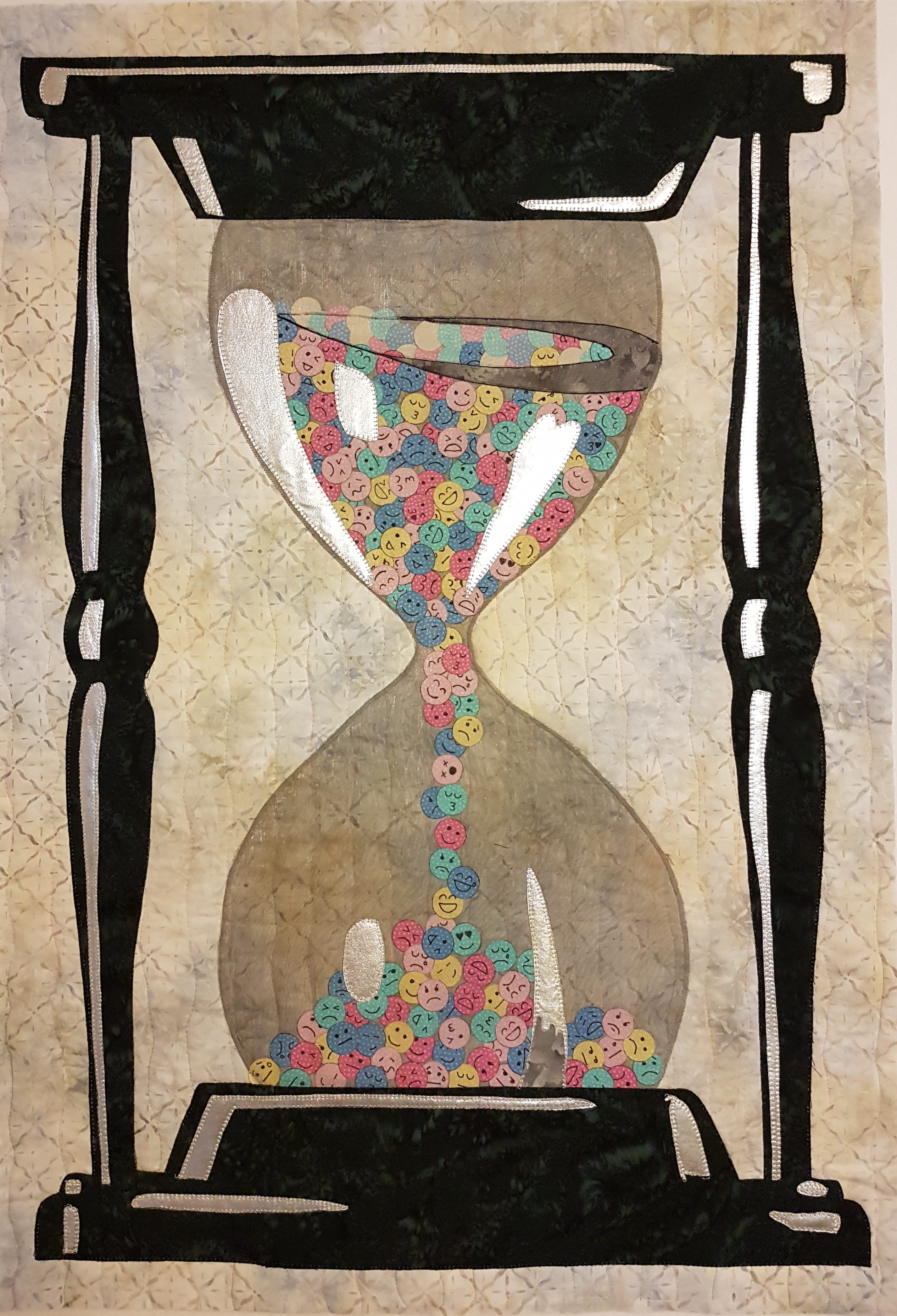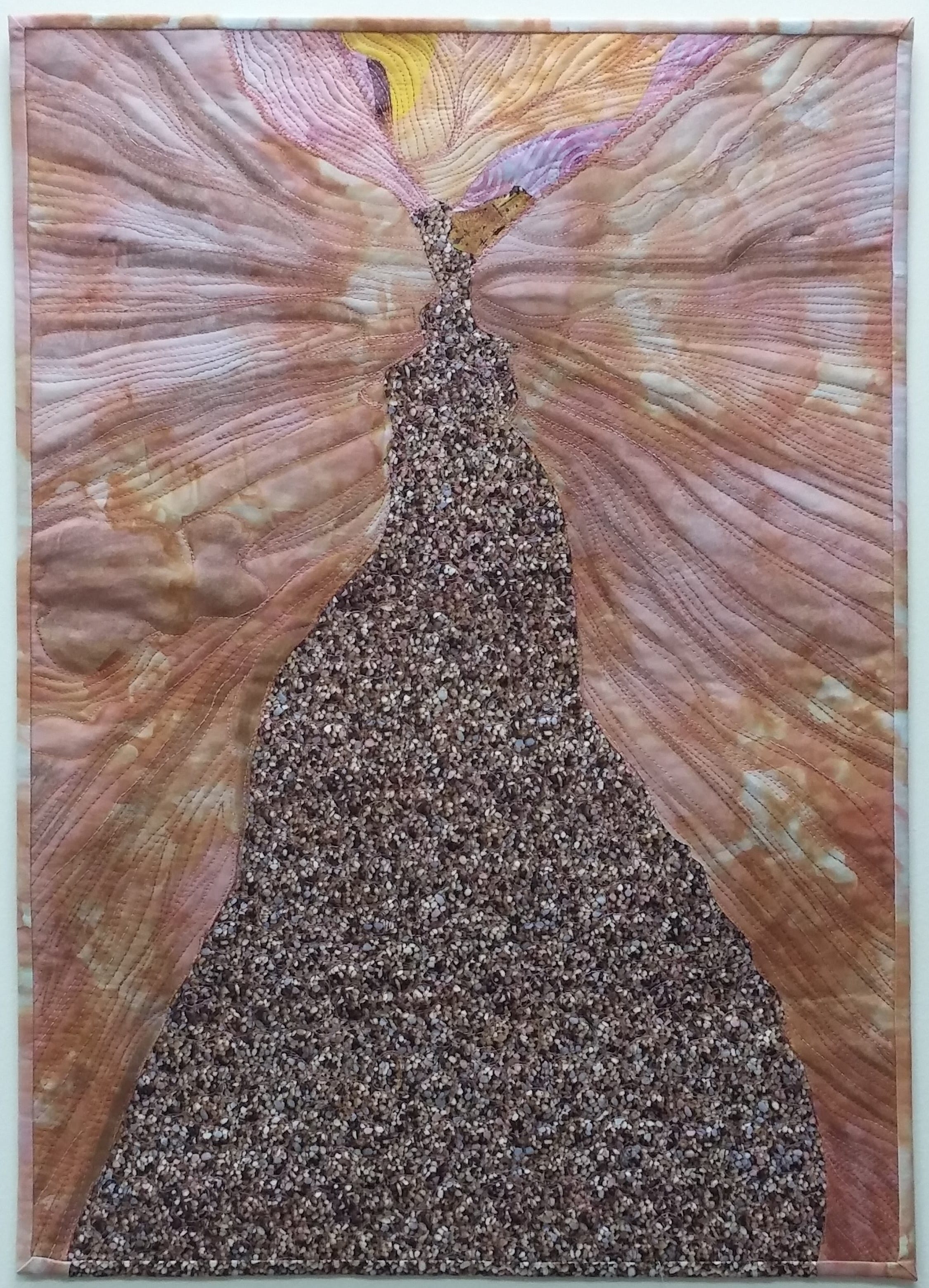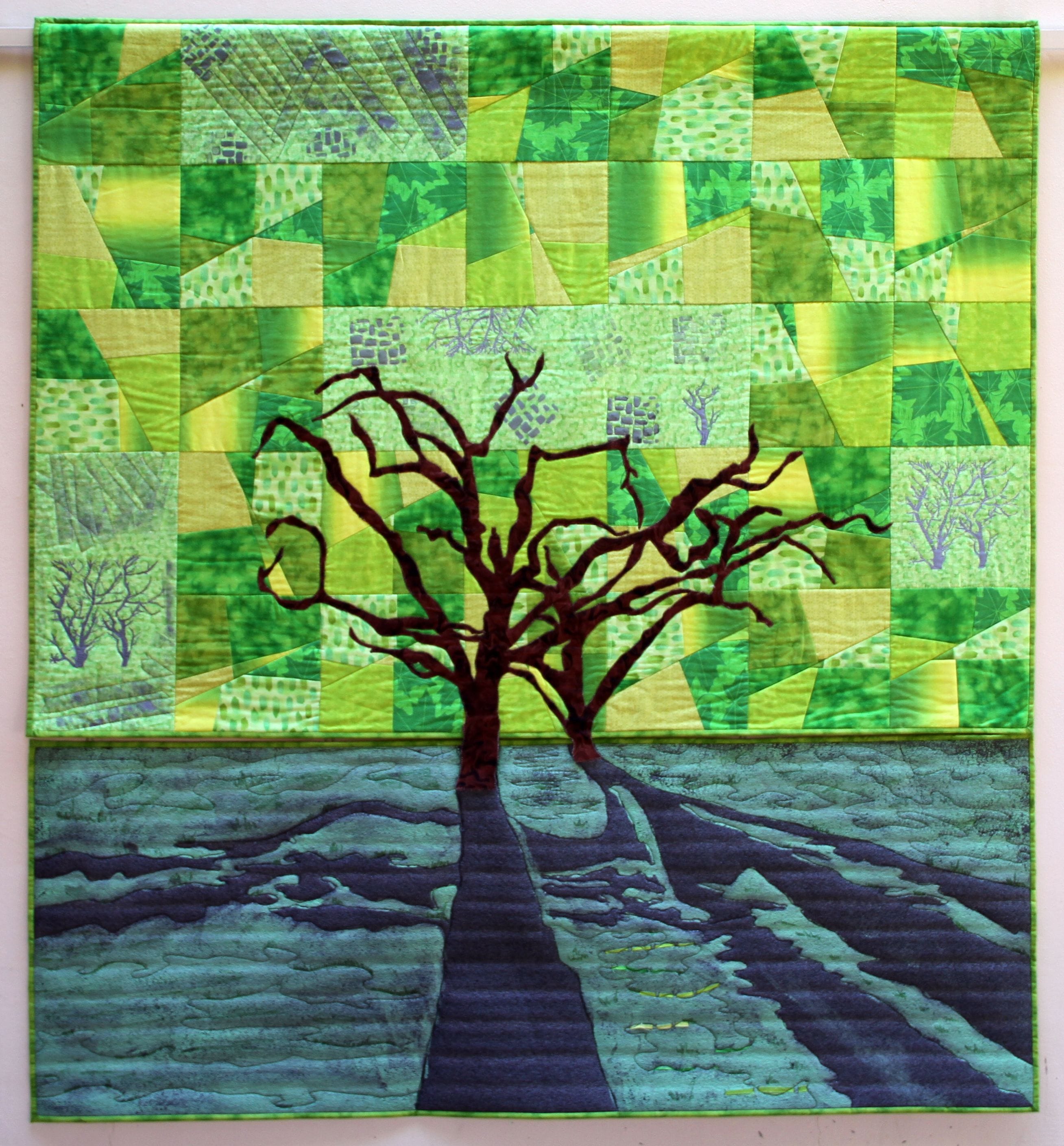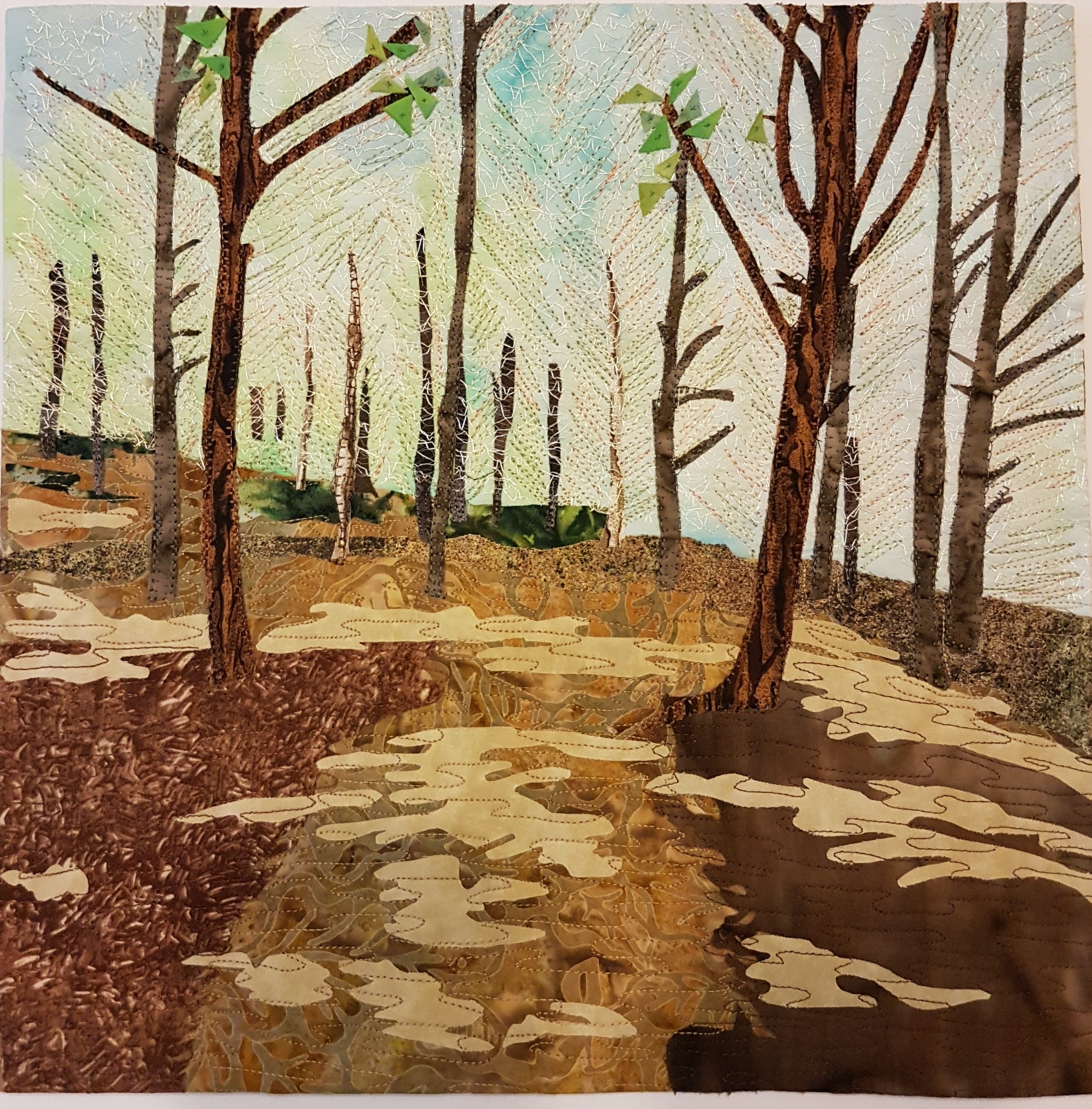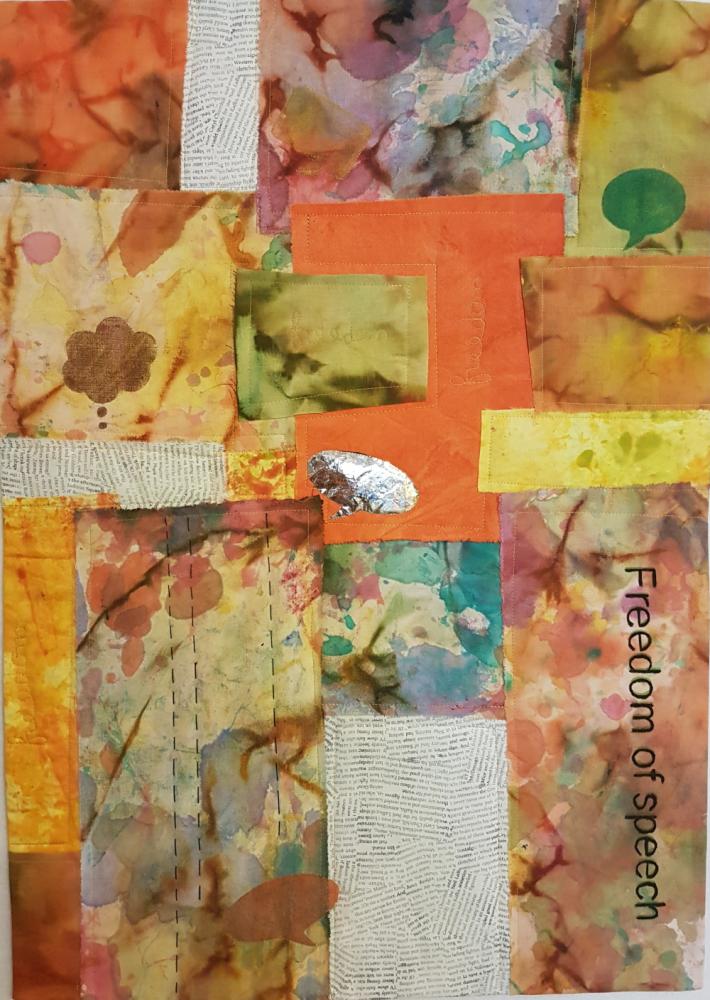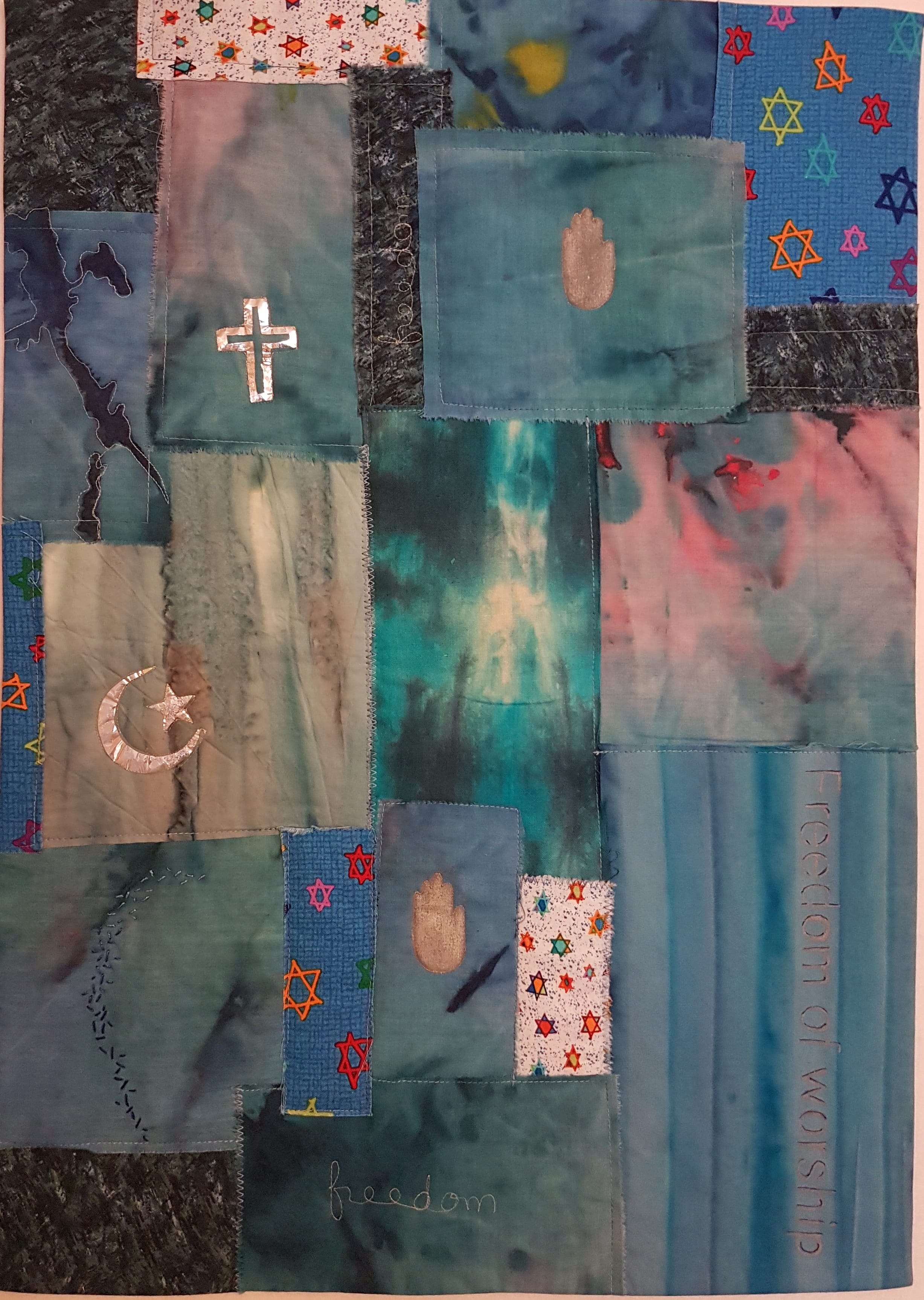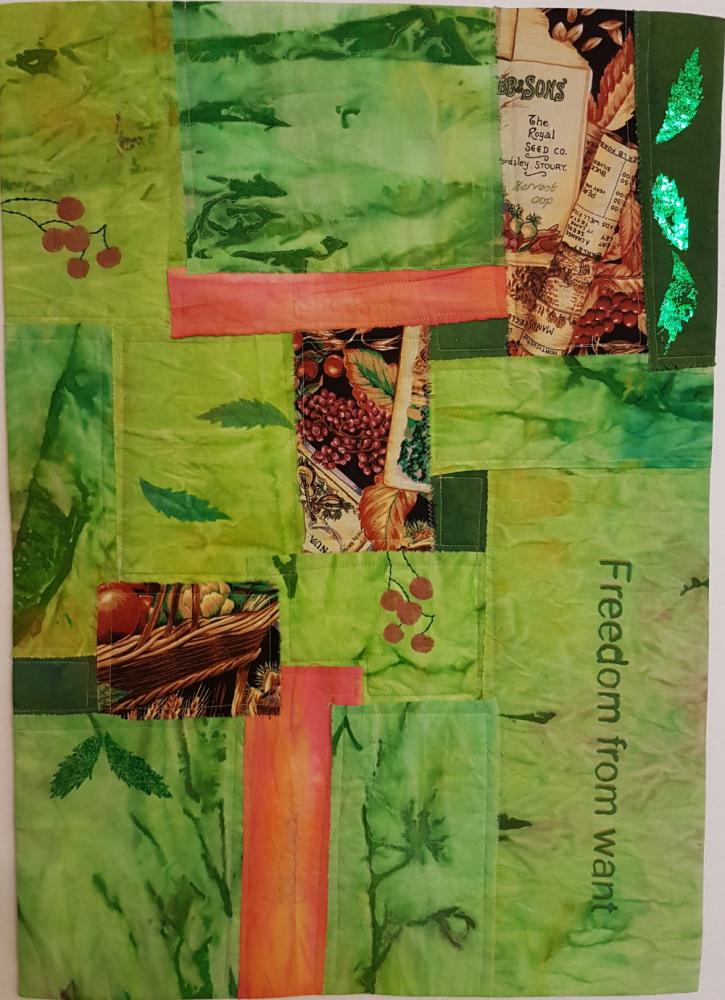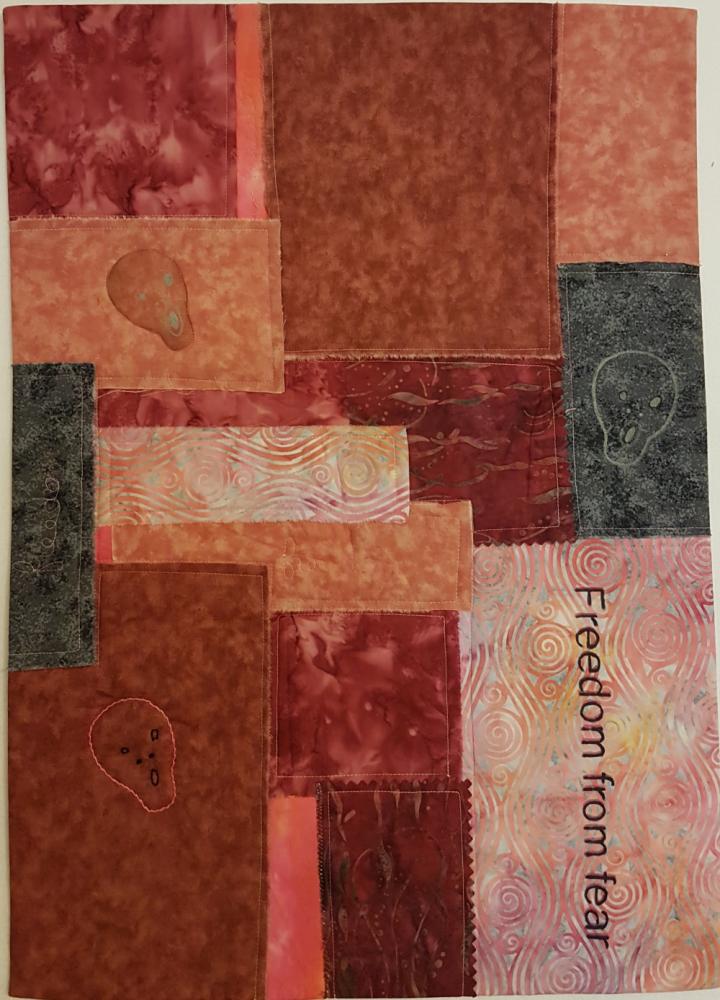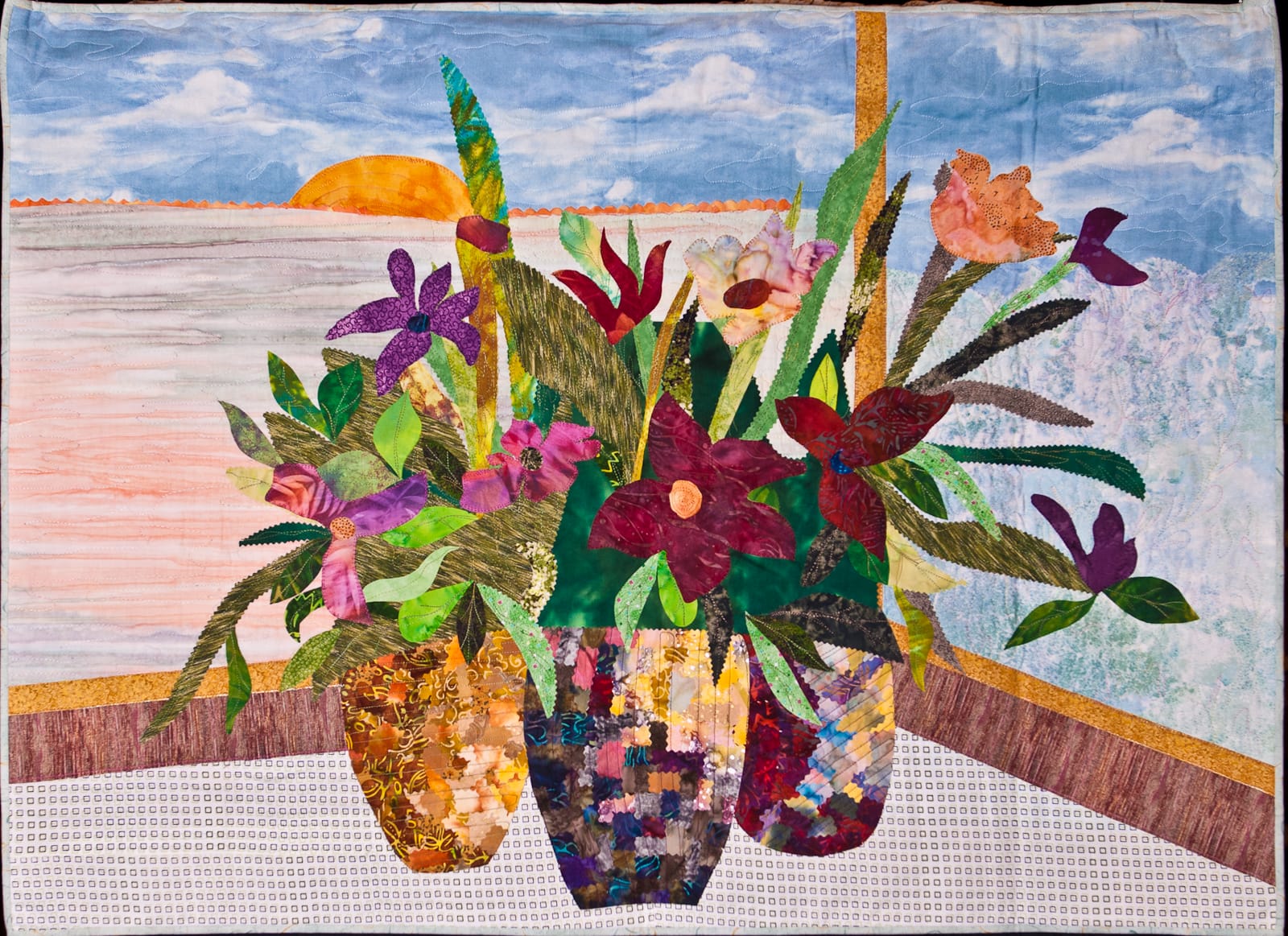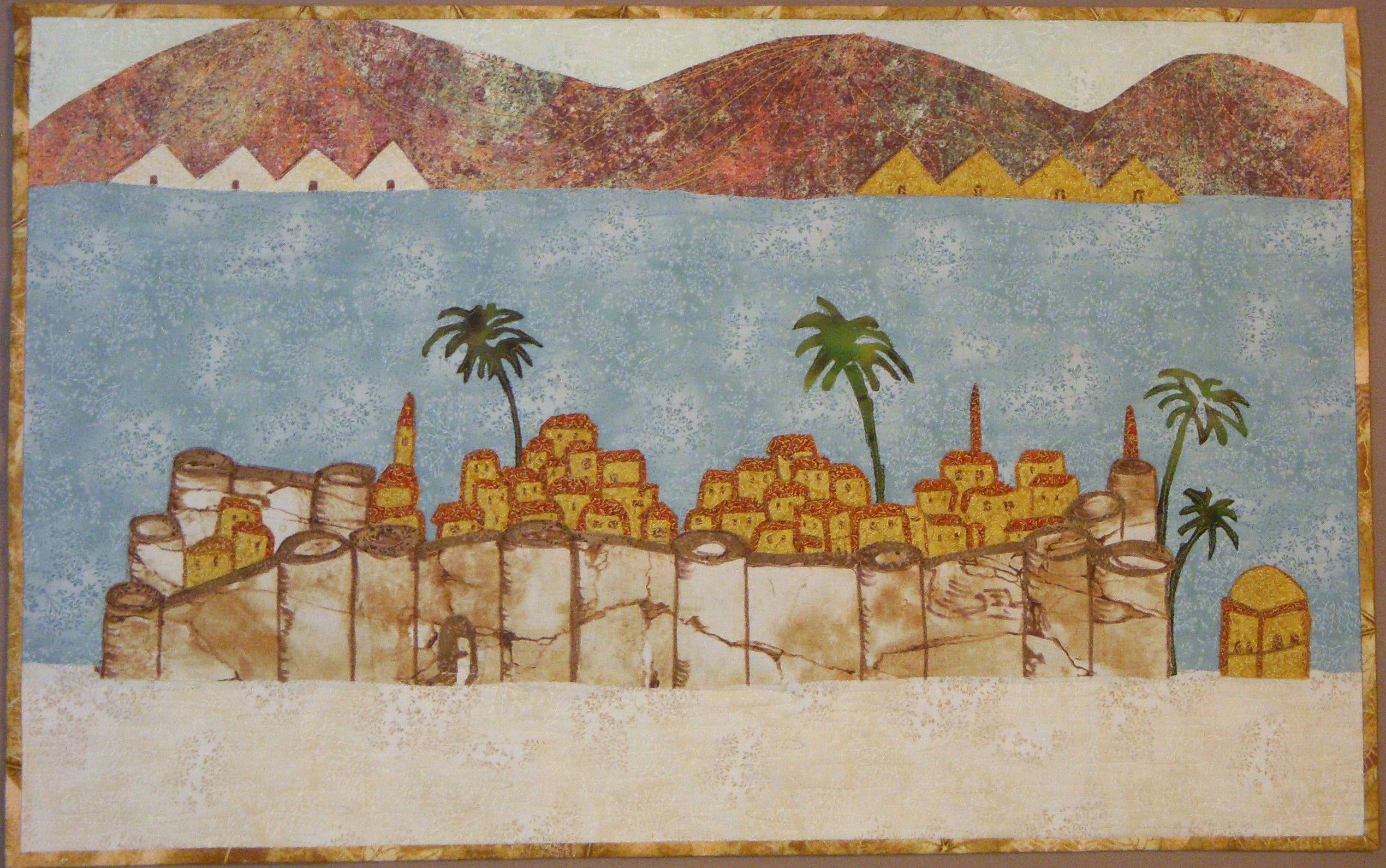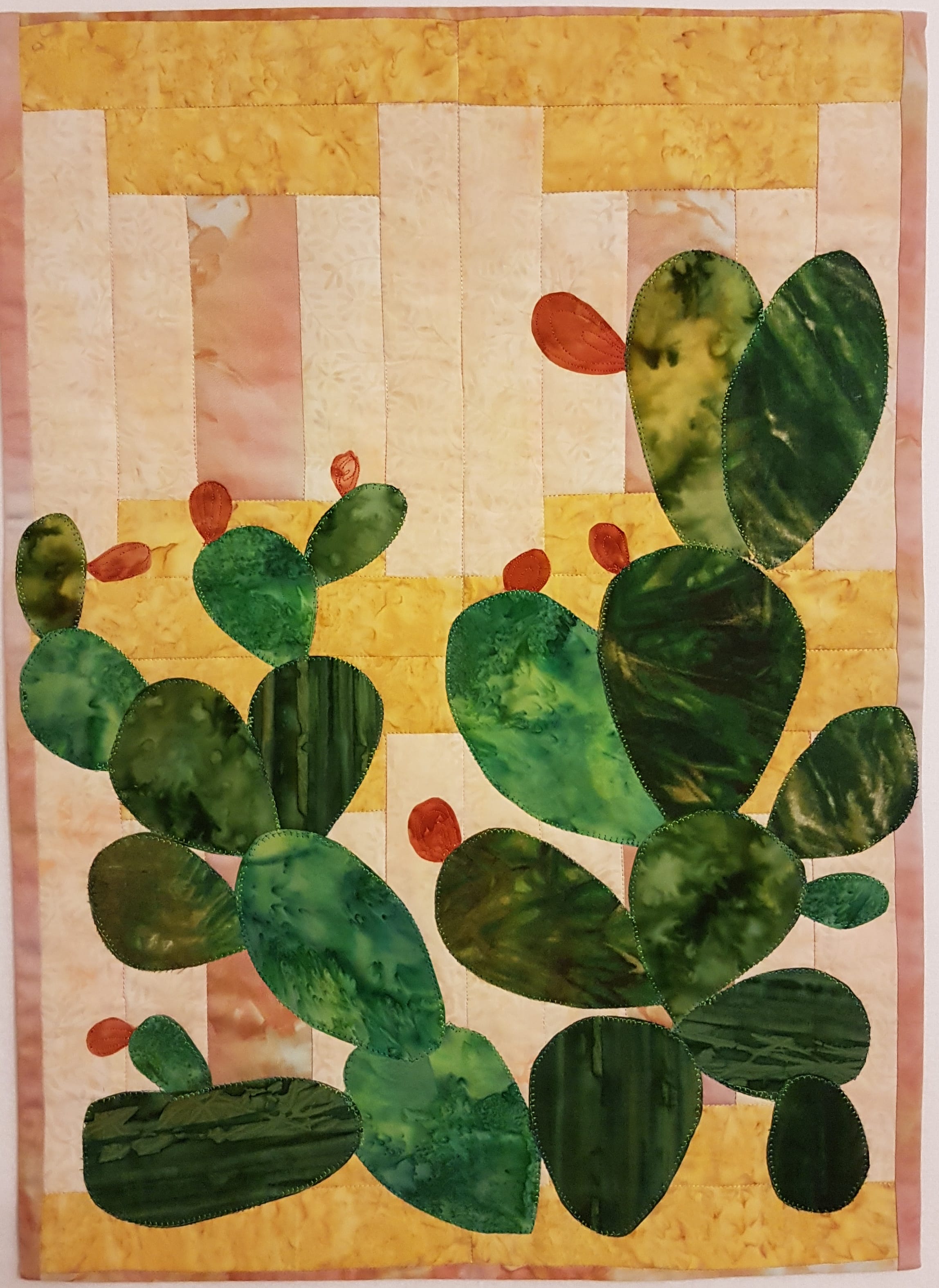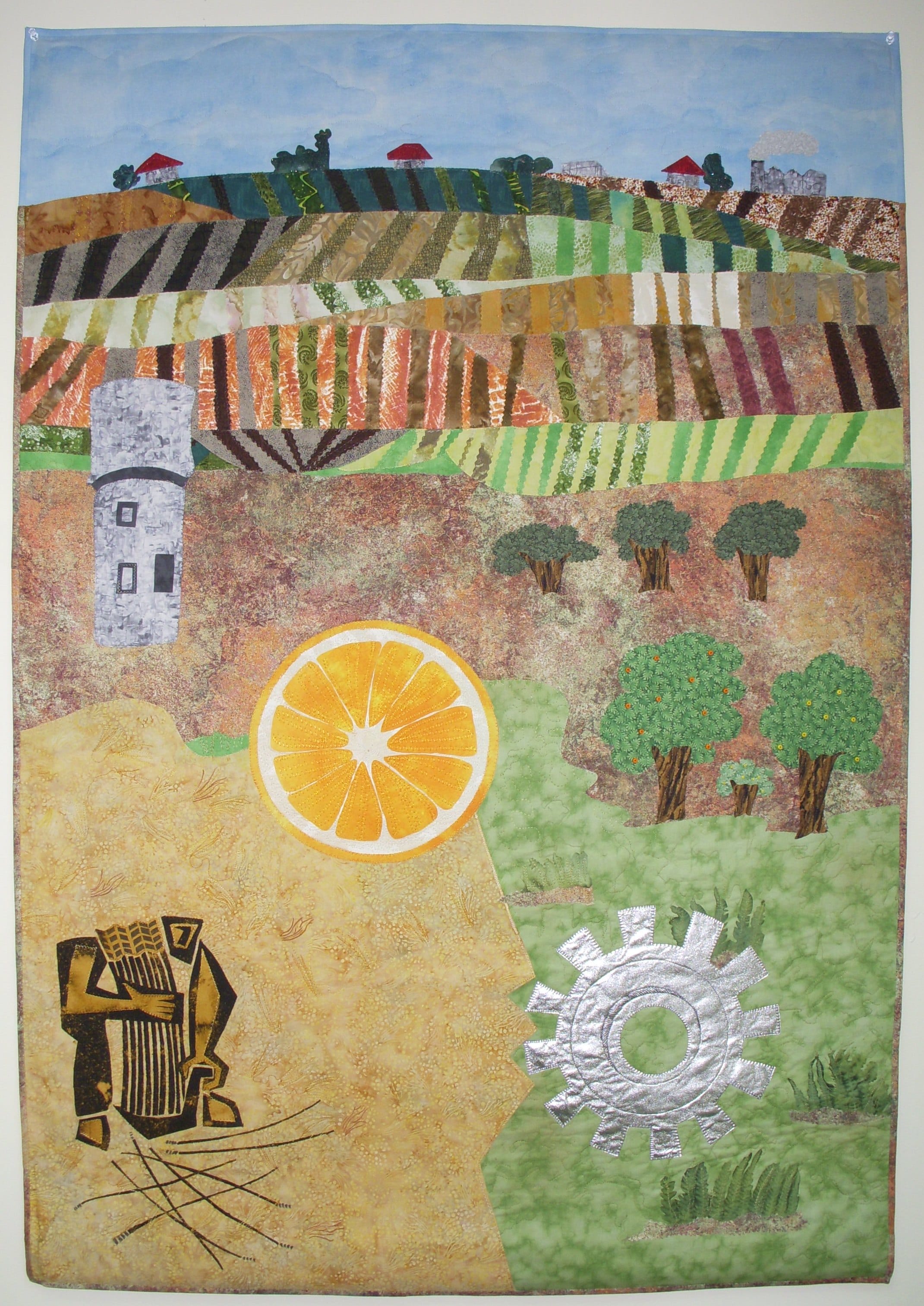Interview with Shoshi Rimer
Shoshi Rimer is an Israeli textile artist who has presented her work in many solo and group exhibitions, and has also won several international awards. After studying traditional quilt techniques, she moved away from them in search of a more personal path that would allow her to express her artistic inspiration.
Shoshi is also part of a group of textile artists composed of 15 art quilters from various countries, called “Voyage”.
This is the link to the artist’s website:
Shoshi, when did you start to approach textile art and why?
I have been exposed to quilting in 1995 during my studies in “Itzuvim” Combined Art College. The course, which focused on traditional techniques, introduced me to the centuries-old basics of quilting.
What are your sources of inspiration? How do you choose the subjects of your artworks?
For me quilting is a wonderful evolving art form, offering infinite creative possibilities and learning opportunities. The Inspiration for my quilts comes from a variety of sources. It can be nature, an expression, a color or a word. For each quilt I make for a themed exhibition, I first do a little research about the subject, and then I collect a lot of photos about it to help me draw the initial sketch for the new quilt.
As for your growth as an artist, how have your works changed from the beginning until today?
My first works were based on traditional techniques. Later, I studied with various teachers and artistic quilters in Israel and abroad, thereby learning a number of innovative techniques. Gradually I used the acquired techniques as a foundation to develop a more personal way of expressing myself while letting my imagination run free as I design my works. I believe the basic rules of the tradition quilting still guide me in my art quilt, although I like to “breake” the rules and find a new way to help me with the creating process.
What do you think is the most important difference between an artisan working with threads and fabrics and a textile artist? When does a textile work become art?
In my opinion “paint with threads and fabrics” makes the difference and upgrade the quilt into an art.
“Life’s puzzle”, “Remembrance” and “Yet and in spit all” are your three works that participated in the recent exhibition “Holocaust in Art”. Can you tell us how you told, in your three quilts, the story of the Holocaust?
Most of my father’s family perished in Auschwitz towards the end of the Second World War. For me – a second generation to the Holocaust – life is like a puzzle. It contains pieces from the dark past of the family, but it also contains parts of my hope for the future to be better, full of happiness and joy. Therefore, I used the only photos left from my father’s family put next to photos of the 3rd and 4th generations to symbolize the continueation of the family in spite all.
Can you tell us about an art quilt to which you are particularly attached?
In 2015 I created the quilt called “Shadow people” based on my cousin’s official poster to commemorate the Holocaust day in Israel. This quilt granted me with a high prize, and Handy Quilter chose it to grant me a Sashiko sewing machine
“Shadow People”, copyright Shoshi Rimer
How important is the experimentation of techniques and materials in your art quilts?
Most of my art works combine both commercial and hand-dyed cotton fabrics. Usually the main technique is based on fusing fabrics, free motion quilting and recently I add painting as an embellishment. I believe in this way I manage to create quilts that can easily recognize as mine.
Do you follow a scrupulous design activity or do you let your instinct orient you?
I rely mostly on my instincts but when I plan my quilts it always starts from a structural design.
Can you tell us about your art quilts “Freedom of Speech”, “Freedom of Worship”, “Freedom from Want”, “Freedom from Fear”?
I belong to an international quilt group called “Voyage”. Every year we produce A2 size quilts based on a theme. For 2017 it was “Freedom”. My inspiration was President Franklin D. Roosevelt’s speech also known as the four freedom speech. In the speech, during the WWII time, he made a break with the tradition of US non-intervention policy. He outlined the U.S. role in helping allies already engaged in warfare. I took these four fundamental freedoms and incorporate its motive into quilts by breaking technical rules and use torn fabrics (Erika Carter’s style) to create the quilt itself. In addition, I choose fabrics that – in my opinion – reflect the spirit of the freedoms people ought to enjoy.
Is the technique or the idea more important? What do you think determines the success of an artwork? When does creativity risk being suffocated by technique?
For me an idea is much more important than a technique. This is why I switched from tradition ways into an art quilt. I felt I could not bring myself into a quilt based only on strict techniques. However, I admire and appreciate artists that create wonderful quilts in the traditional ways.
“Flow”, copyright Shoshi Rimer
What are you working on right now?
I challenge myself in creating a new quilt based on an ancient mosaic. It will be made out of tiny pieces of fabrics, as a mosaic work.
